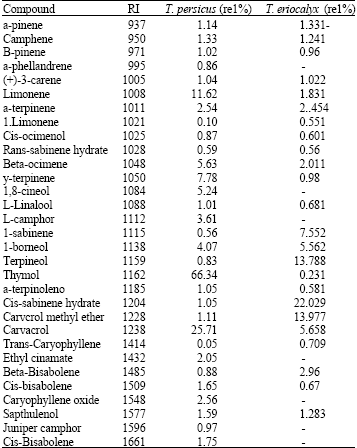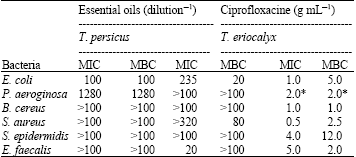Research Article
Antibacterial Activity and Chemical Constitutions of Essential Oils of Thymus persicus and Thymus eriocalyx from West of Iran
Department of Microbiology, Research Building, Lorestan University of Medical Sciences, Razi Street, Khoramabad P.O. Box 68198, Iran
Mohammad Hadi Meshkatalsadat
Department of Chemistry, Faculty of Science Larestan University, Khoramabad, Iran










